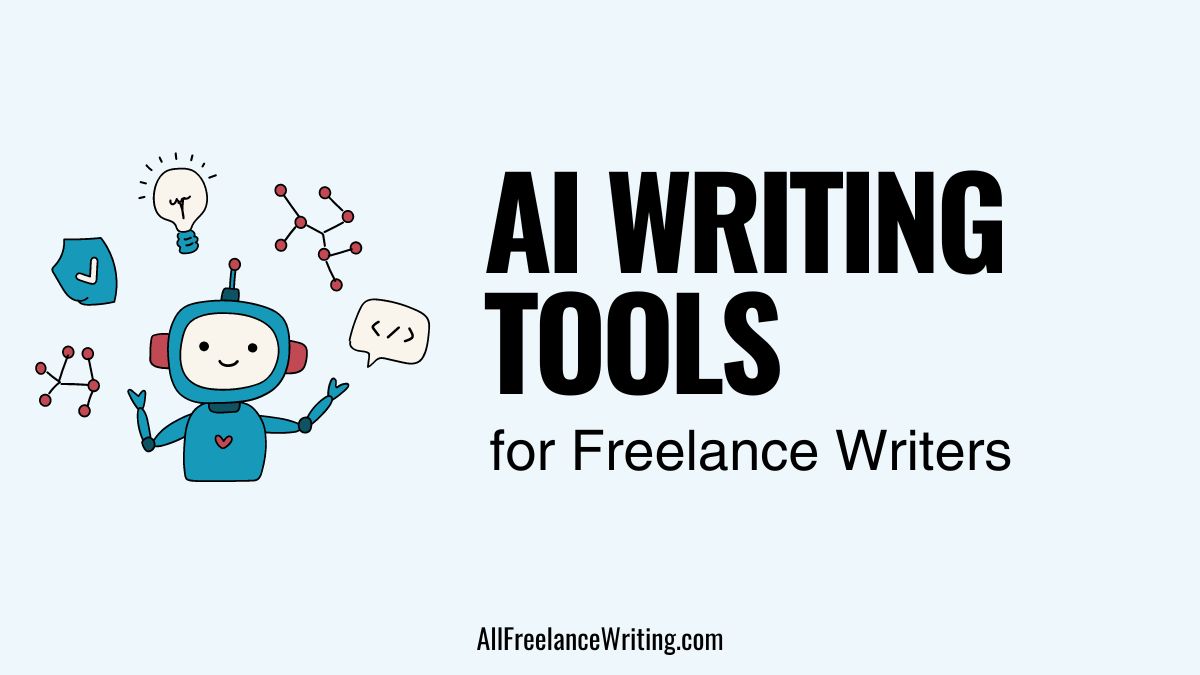
We’ve talked about whether or not AI writing tools are coming for your job as a freelance writer. We’ve explored some of the legal and ethical AI concerns you and your clients should be aware of.
Now let’s look at some examples of generative AI tools you can test right now for your freelance writing business.
But first…
What is Generative AI?
Generative AI is artificial intelligence that learns through existing content and data sets, then uses that knowledge to create (or generate) something in a predictive way. This new AI-generated content might be text, like an article or answer to a question. It can be an image. Or video. Or music. Any kind of content.
As far as generative AI writing tools go, let’s look at four options you can play with to get a feel for what this technology can (and cannot) do for you.
With ChatGPT being one of the most talked-about options, let’s start there and sort out what makes “ChatGPT” different from its related “GPT-4.”
ChatGPT vs GPT-4
If you haven’t heard of ChatGPT yet, you should start with the first post in my series on AI content, which covers what ChatGPT is. You’ll even get to see how ChatGPT describes itself.
We’re not going to dive deeply into the technology here, but it’s important you understand some key differences between ChatGPT 3.5 (the version you’ve most likely tested) and GPT-4 before choosing to use one of them or one of their alternatives.
Those differences come down to three main points:
- Models
- Interfaces
- Costs
The Models
When we talk about ChatGPT, we usually mean ChatGPT 3.5. This is the current free model you can play around with.
This is also the model from OpenAI that can’t access the internet. It has lower token limits (we’ll get to this). And it has a bad habit of “hallucinating” fake facts and sources to fill in those knowledge gaps.
GPT-4 is a newer model. While it’s built-in internet browsing plugin was recently disabled for ChatGPT-4, it still has internet access via other plugins. And it has a code interpreter plugin that allows users to upload files, analyze data, and more.
The Interfaces
“ChatGPT” more generally is one of the interfaces with which you can interact with OpenAI’s models.
ChatGPT 3.5 is free. But you can use the same interface with the GPT-4 model if you have a ChatGPT Plus account.
If you’ve seen or used this interface before, you’re familiar with ChatGPT.

When using GPT-4 via the ChatGPT interface, you’ll see these options to choose from: plugins or code interpreter.
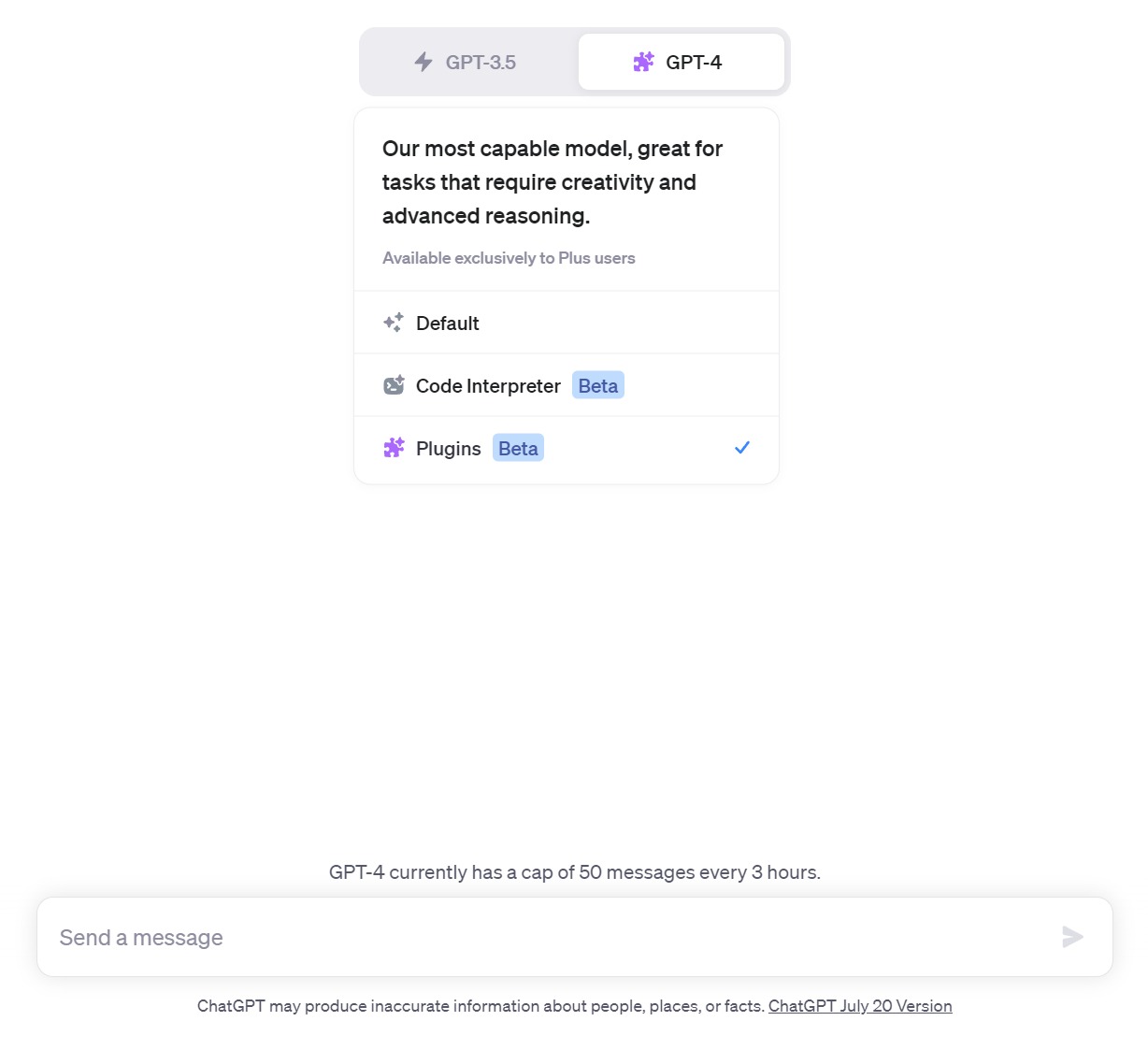
Plugins and the new code interpreter mode extend the functionality of the GPT-4 model via ChatGPT. For example, they can let GPT-4:
- Browse the internet;
- Visit links you provide;
- Summarize long .pdf files or videos;
- Upload and analyze files (such as data in a .csv file);
- Create charts and graphs;
- And much more.
When using GPT-4 via the ChatGPT interface, you can have up to three active plugins at a time. And you’ll find those in OpenAI’s plugin store.
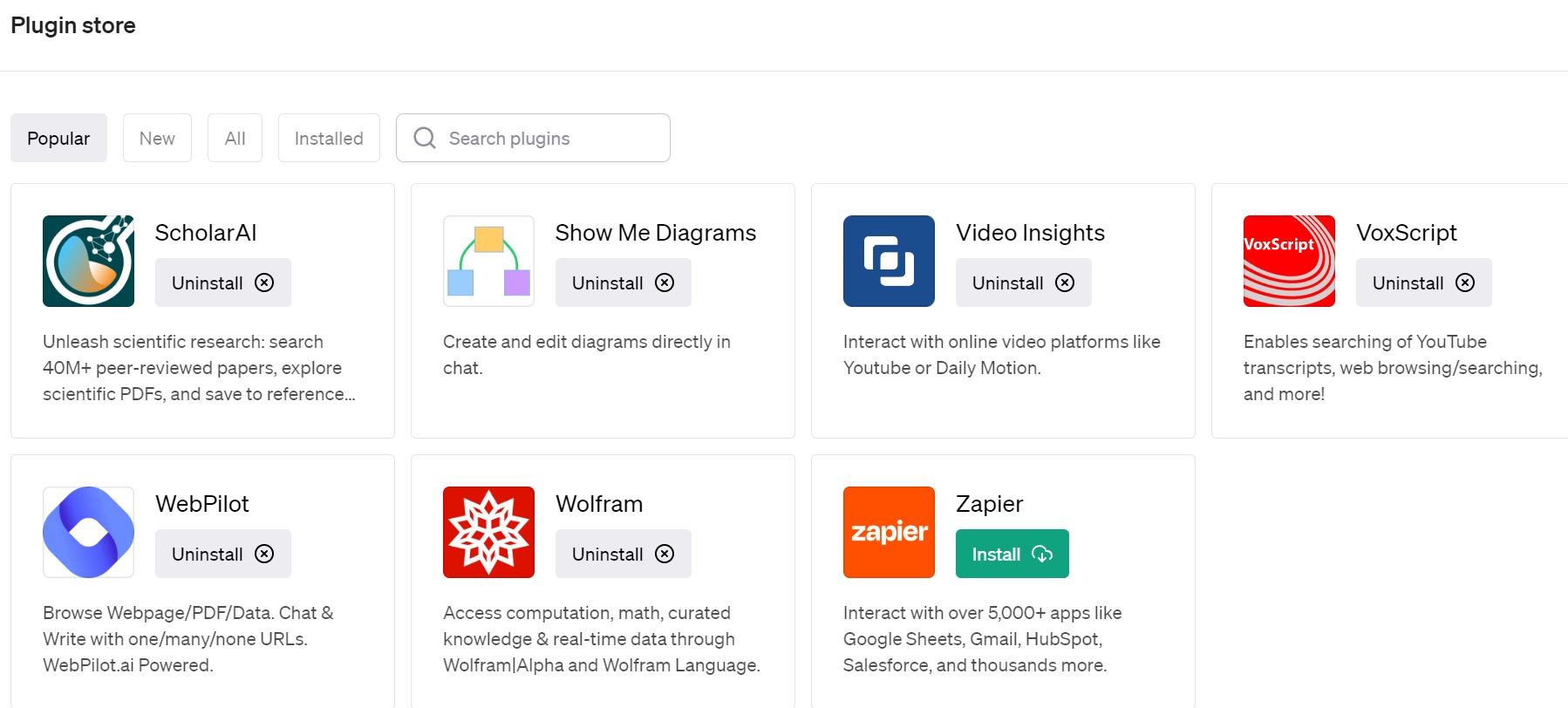
You can also access these models through a different interface: the OpenAI Playground. This interface gives you more control over which models you want to use.
You’ll need an OpenAI account for this. When you sign up, you’ll get a limited number of tokens you can use to test things out. Then you’ll need to buy further access.
Note: Not everyone has access to GPT-4 via the Playground yet. We’re still waiting on our GPT-4 API here, supposed to roll out by the end of the month. So for the time being, my GPT-4 testing is via the ChatGPT interface with ChatGPT Plus. And until that changes, GPT-4 tests documented here will be through ChatGPT. You should also know that plugins are only available via ChatGPT Plus (not via GPT-4 in the Playground).
Here’s what the OpenAI Playground looks like.
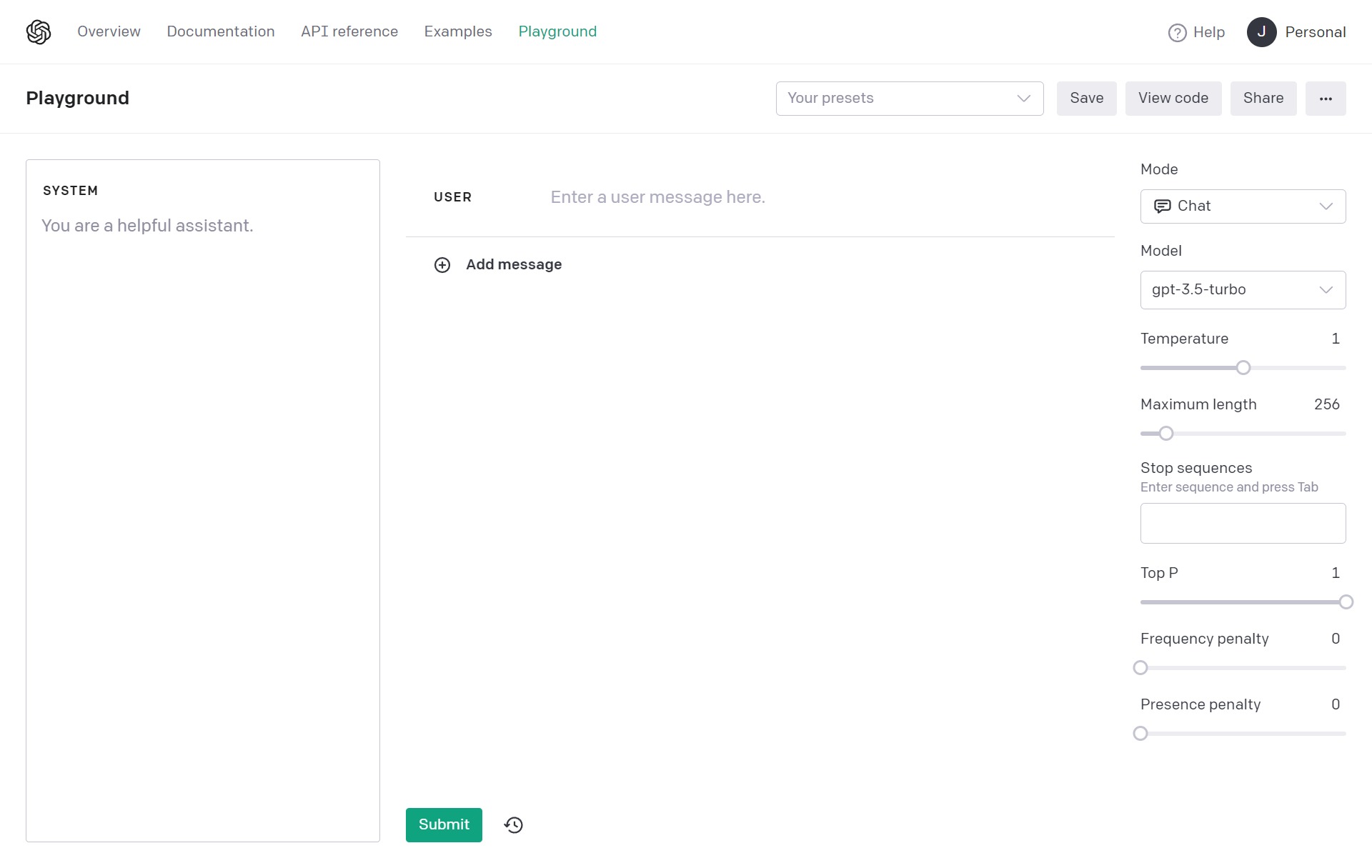
The Costs
To use GPT 3.5 via ChatGPT, you’ll at least need a free OpenAI account. To use GPT-4 via ChatGPT, you’ll need a Plus account which currently costs $20 per month.
It’s important to note that even if you use the GPT-3.5 models in the OpenAI Playground, you’ll pay based on the number of tokens you use. Pricing varies for different models, so you don’t want to use more expensive models there for tasks where a simpler one will do.
What Are Tokens in AI Writing Tools?
Tokens are a unit of measurement related to the input and output of text in an AI writing tool. Think of it as breaking a block of text into tiny chunks. These can be single words, characters, or something different depending on the particular model and language used.
According to OpenAI, tokens equal approximately 4 characters each or .75 words.
These tokens determine the limitations of how long your prompt can be as well as how long of a response the AI writing tool can generate. You can only input and output so much text before you hit those limits.
If you try to exceed those token limits, the tools can stop generating their responses. Or they might “forget” earlier prompts and messages in a chat, losing context and providing nonsense output. So if you aren’t getting the kind of results you expect, you might be trying to do too much for that particular tool’s token limits.
ChatGPT vs OpenAI Playground: Which Should You Choose?
If you don’t have a good grasp of the tech here, stick with ChatGPT for now.
Why?
- You can play with the free 3.5 model first to familiarize yourself with the interface.
- ChatGPT-4 offers a stable price per month rather than worrying about APIs and token usage.
- The plugins that extend GPT-4’s functionality are only available via ChatGPT anyway.
See how things work out for you first, and you can always get API access and use the OpenAI Playground more when you’re ready to integrate GPT-3.5 and GPT-4 into third-party applications.
Alternatives to ChatGPT 3.5 and GPT-4
While ChatGPT might generate a lot of the buzz these days, it’s not the only AI tool you should be aware of. And the OpenAI Playground isn’t your only platform alternative.
While new AI writing tools enter the market all the time, I won’t cover them all here.
Some are meant for highly-specific niche use cases such as SEO.
Others are built on top of the models we’re talking about in this series.
Another one getting a lot of attention right now comes from a company with a problematic history with user privacy, and the company finds honesty a bit too challenging to be something I could ever promote in good conscience.
So these might not be your only options, but we’re going to focus on two of the free ChatGPT alternatives you can try today.
Claude 2
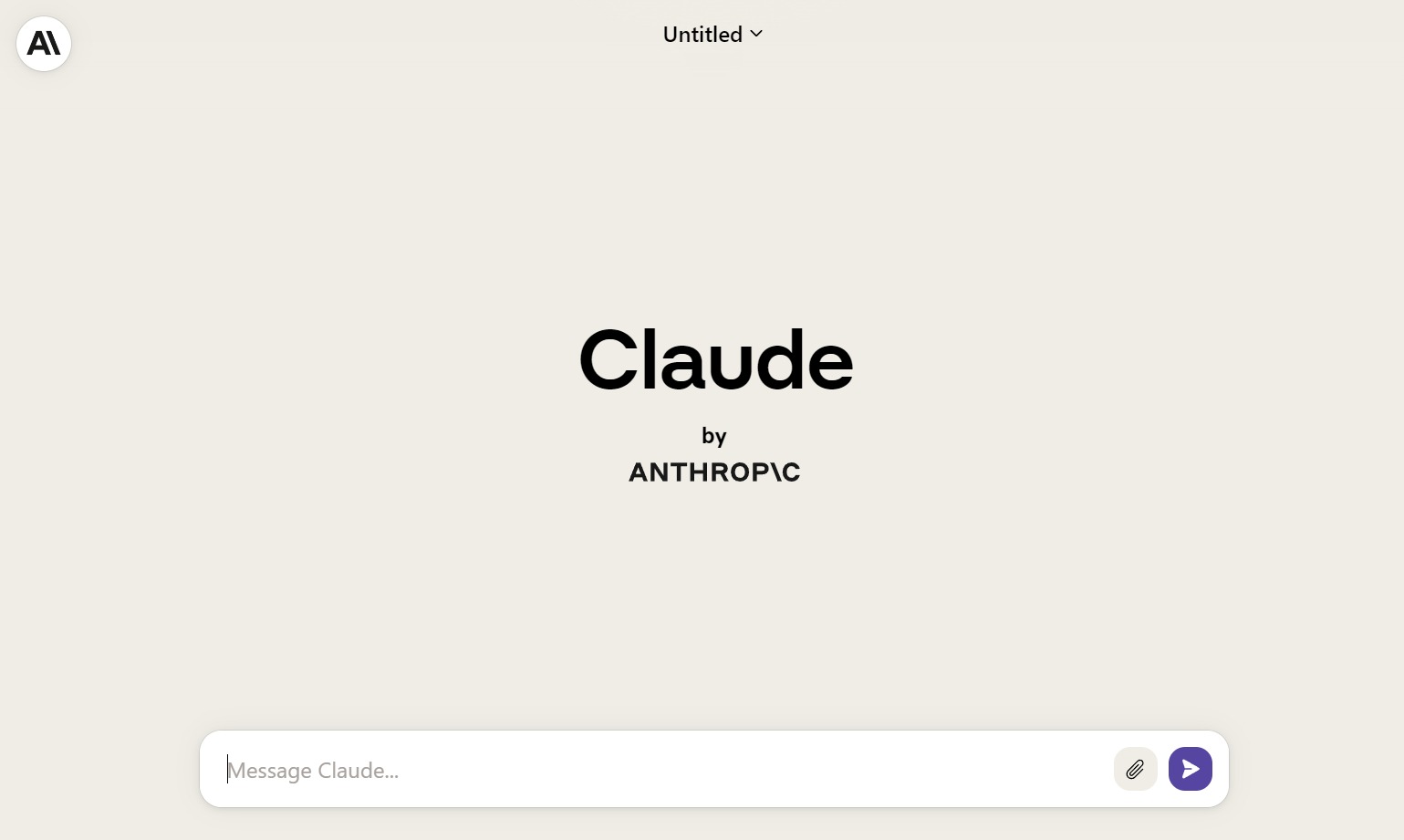
As far as free AI writing tools go, Claude 2—from Anthropic—is a great place to start. It might be even better than the free version of ChatGPT you’ve likely heard more about.
Claude 2 is a sort of in-between option for ChatGPT 3.5 and GPT-4.
Where it shines from a writer’s perspective is its much higher token limit than either of OpenAI’s options. Check the chart below to compare these, but for now, know that you can input thousands to tens of thousands of words, and Claude 2 can handle it.
Why do Higher Token Limits Matter?
And why do they matter specifically if you’re not looking to have AI tools write for you?
Higher token limits can be great for revisions and repurposing content you already have.
We’ll talk more about these use cases later in the post series, but just know you could submit an e-book you wrote (let’s say 40-50k words) and have Claude digest all of that, then have it help you write blog content, emails, and social media updates to promote that e-book. And it’s not plagiarizing random sources on the internet. It can base those on what you already own and submit.
Claude 2 does this with a 100,000 token limit (or, more accurately, a 100,000 token context window, meaning that's the token limit it can remember or consider when generating a response, not the token limit of the responses it can generate).
This increased token limit means it could also help you after conducting a content audit. For example, if you have 1500+ articles like I do on All Freelance Writing (even after significant cutbacks over the years), there are bound to be topics you’ve touched on more than once.
In an audit, you might find two or three posts that would serve you better if the content was merged into one updated post.
Claude can handle that amount of content, evaluate it, and help you piece together an updated, merged version of that content.
As always, I don’t recommend letting it write anything for you entirely if you plan to publish it. But you can have it help you craft a new outline for the content you have, offer ideas on how to organize it, and suggest updates or new topics to fill holes that still remain in your new piece.
How Else Does Claude 2 Stack Up?
Here are a few more important things you’ll want to know about Claude 2:
- It’s free. You can sign up and use Claude 2 without paying anything, so it’s a good place to run initial tests if you’ve never used an AI writing tool before.
- Claude 2 does not have access to the internet like ChatGPT-4 does via plugins.
- Claude 2 does accept uploads (like the premium ChatGPT-4, but unlike the free ChatGPT 3.5).
- It does a decent job of writing code. In fewer than 5 minutes, I described a basic site structure and topic, Claude 2 wrote the HTML and CSS, and it was live on a test server. ChatGPT can also do this, but Claude 2 was faster, and it seemed to follow instructions a bit better regarding responsiveness and layout. Not perfect. But surprisingly good. I’m excited to test this with more thorough prompting and images I provide to see how it does then.
- Claude 2’s training data goes to 2023, meaning it has around two more years’ data than ChatGPT-3.5.
Is Claude 2 a perfect alternative to ChatGPT?
No.
Despite Claude 2’s constitutional model that aims to avoid producing discriminatory content or helping users engage in unethical or illegal activities, its very nature—just like that of ChatGPT—is one with a high risk of plagiarism and copyright infringement (meaning unethical and potentially illegal).
I even started a chat with Claude 2 about this constitutional model and how it accounts for the fact that it produces content without adequate sourcing, which is a form of plagiarism. It started out not seeming to fully understand what plagiarism is. Then it eventually acted flustered and said it would pass the feedback to its developers.
Not impressed.
This is a repetitive theme among those behind these kinds of generative AI tools. We saw it when OpenAI pulled direct Bing access via its own plugin as a result of abuse for example.
These kinds of efforts, constitutions, etc. are great PR for companies that don’t want to be held directly accountable for the problematic content their tools can create. It provides an air of trying to do better than the technology currently allows.
I’ll do a more thorough comparison of some of these tools and the types of plagiarism and potential copyright infringement they come up with, but for the previous smaller tests I ran, things didn’t go great for any of them.
In the end, the only solution for this is training transparency. Developing tools that can take in and/or scrape information from various sources, but not retain what those sources were and cite them while creating new content is deeply problematic. And these companies, despite their claims of caring about ethical and legal outputs, don’t have much incentive to change this.
Is Claude 2 Worth a Look?
Yes.
Despite having issues, they’re no worse than what you’ll find with other AI writing tools currently available.
With larger token limits, more up-to-date training data than the free GPT-3.5, and being freely available, I’d say if you only test one AI writing tool making waves right now, Claude 2 is a top contender.
Google’s Bard
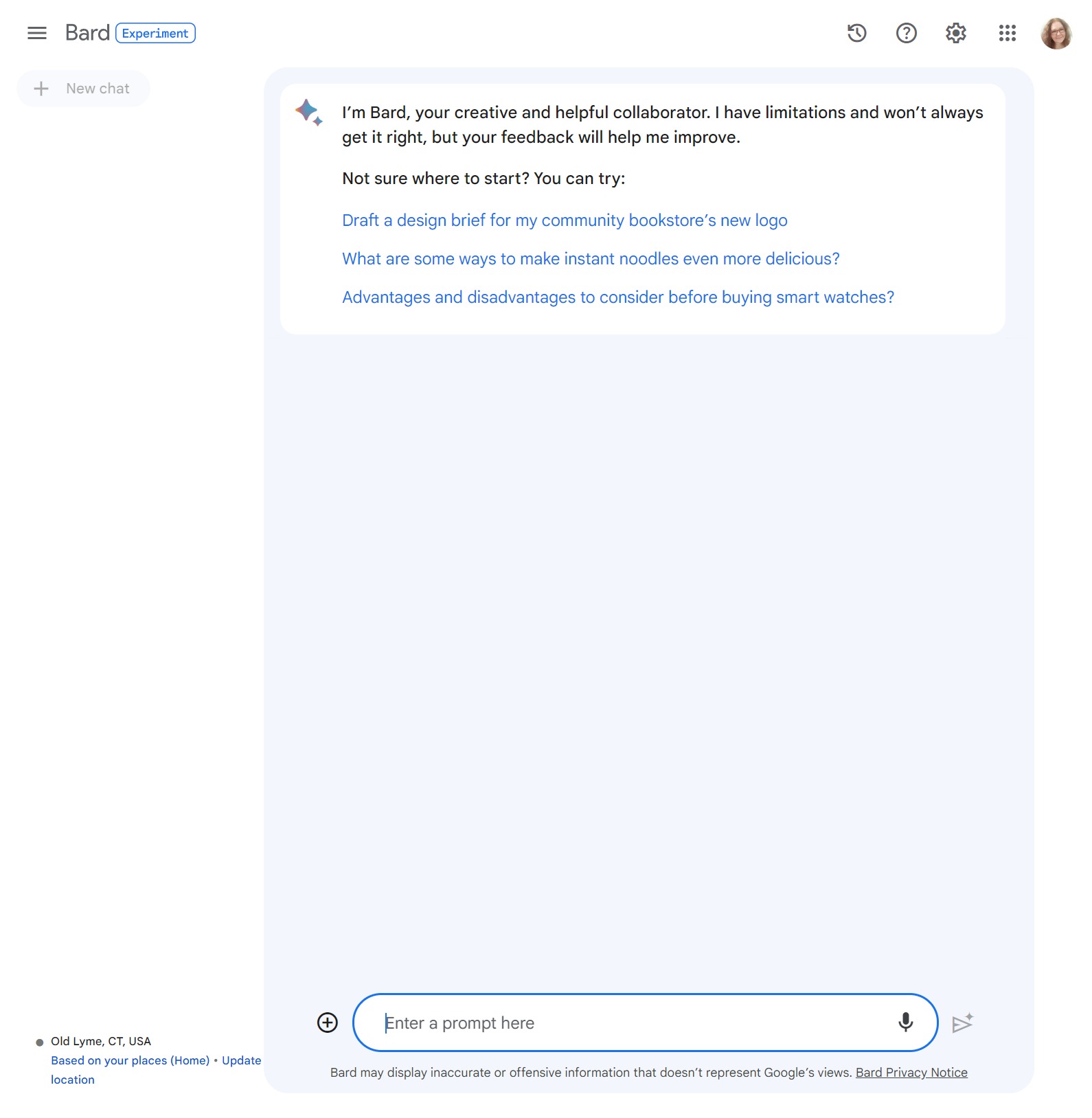
Another free AI content tool you might want to check out is Google’s Bard.
I’ll be frank. Bard hasn’t won me over yet.
On some level, I feel as though Google already has enough of everyone’s data, and I’m not keen on feeding them prompts and seed data they can use in further training.
But…
Bard might be a good tool for you to start with if you’re looking for AI writing tools with internet access. With Google’s entry into the generative AI space, you’ll get that. Plus, it’s free.
Google’s Bard is also open to more users than Claude 2, which is only currently available (without a VPN) in the US and UK. Bard is available in over 40 languages and in more than 230 countries.
The main issues I have with Bard from my testing so far are:
- Response generation seems slower.
- Bard misunderstands simple prompts more than some other AI writing tools (such as not understanding the difference between headings and sub-headings, struggling with outlines, and repeating its own prior output with slightly different formatting when you try to help it improve a bad response).
- Bard can give much shorter outputs, especially for things like outlines. I suspect this is a result of it having a lower token limit.
- This low token limit also means you’ll need to rely on shorter prompts or shorter prompt sequences. This limits the quality of the output you can receive, especially for highly-specific tasks.
- While some see its connection to Google as a good thing, I don’t necessarily consider it positive. Google is one of the biggest instigators of spam content creation on the web, and one of the worst judges of authoritative content. Bard gives them yet another way to feed third-party content to users without adequate credit or credibility behind the information they amplify. And now they’ll more directly help publishers of SEO spam and regurgitated content via Bard, whether that’s intended or not. But that’s a chat for another day.
Bard is OK for what it is. It will undoubtedly get better with time. And it’s fine as a tool to let you play with AI and internet connectivity where GPT-3.5 and Claude 2 cannot.
While Bard won’t be a big part of my own AI use cases any time soon, have at it. It might be a better fit for you.
ChatGPT-3.5 vs GPT-4 vs Claude 2 vs Bard
Here’s a quick comparison chart of these four AI writing tools to help you decide which are better fits for your intended use.
| ChatGPT 3.5* | GPT-4 (via ChatGPT)* | Claude 2 | Google Bard | |
| Cost | Free | $20 / month | Free | Free |
| Token Limit | 4096 | 8192 | 100,000 † | ~1000 ‡ |
| Internet Access | No | Via plugins | No | Yes |
* Information in the table above regarding ChatGPT 3.5 and GPT-4 apply specifically to the use of those models via the ChatGPT interface. Using those models via the OpenAI Playground might influence available features like plugin access as well as cost. Token limits may also vary when using the OpenAI Playground vs the ChatGPT platform.
† While token limits often apply to both your input and the AI tool’s output, it works a bit differently with Claude 2. The 100,000 token limit (or context window) applies to inputs, such as importing a manuscript you want Claude 2 to help you analyze or revise. However, Claude 2’s output has a much smaller token limit of “up to a few thousand tokens.”
‡ There isn’t a lot of information from official sources on Bard’s token limits. However, 1000 tokens is the most commonly-reported limit I found at the time of writing.
Note: These token limits were based on the most recently-available information at the time. It should be expected token limits will change in the future.
Have you tested any of these AI writing tools? Which sounds like it might be the most helpful in your own freelance writing business?
If you’re still not sure how you might use these tools, check back for my next post in this series on AI for freelance writers for a list of potential use cases to help you optimize your writing process, improve your marketing, and make the most of the content you already own.
Read the Full Series on AI for Freelance Writers
- AI Content and the Future of Freelance Writing
- Ethical AI: Legal & Ethical Considerations for Writers & Publishers
- THIS POST: 4 AI Writing Tools for Freelance Writers
- The Best Way to Use AI to Make Money as a Freelance Writer
- 80 AI Use Cases for Freelance Writers
